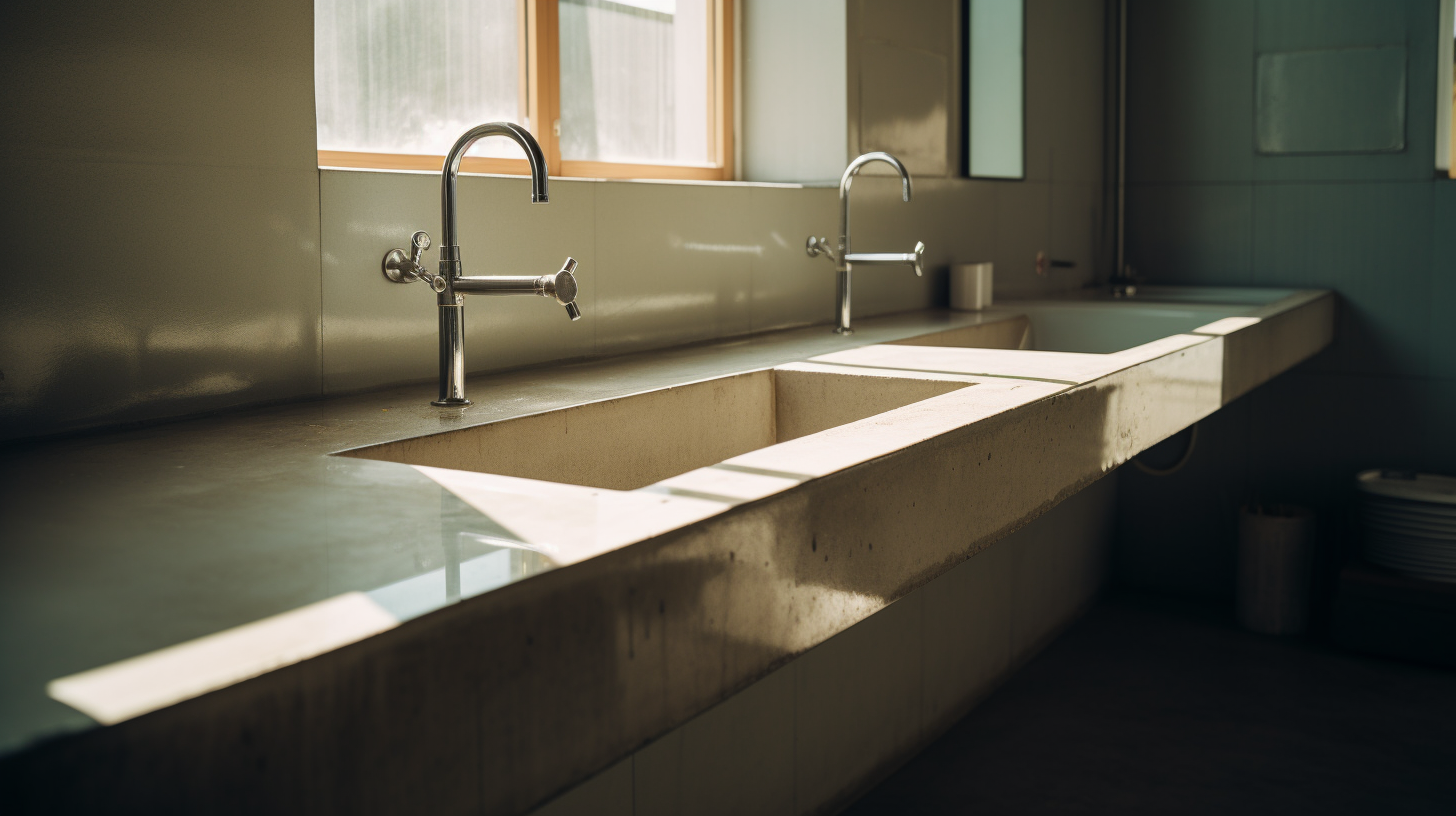Concrete sinks have become increasingly popular over the years due to their durability, functionality, and aesthetic appeal. Are concrete sinks durable though? Indeed, They are made of a durable material that can withstand heavy usage and last for years, making them an excellent investment for homeowners. However, while concrete sinks are known for their durability, they are not entirely immune to water damage.
Water is the enemy of concrete, and if left unaddressed, it can cause structural damage and make your sink less durable over time. That’s why waterproofing your concrete sink is essential to ensure that it remains in excellent condition for years to come. In this guide, we will walk you through the steps on how to waterproof your concrete sink, and we’ll also explain why it’s so important. So, let’s get started!
Why Waterproofing is Essential for Concrete Sinks
Water damage is one of the most common problems that concrete sinks face. Water can seep into the concrete surface and cause it to weaken over time, leading to cracks, leaks, and other structural damage. This damage not only reduces the sink’s aesthetic appeal but also compromises its durability, potentially shortening its lifespan.
That’s why waterproofing your concrete sink is so important. Here are some of the benefits of waterproofing your concrete sink:
A. Water Damage Prevention
Waterproofing your concrete sink prevents water from penetrating its surface, reducing the risk of water damage. Waterproofing seals the surface and protects it from water, ensuring that the sink remains structurally sound for years to come.
B. Stain and Mildew Prevention
Waterproofing also prevents stains and mildew from forming on the surface of the sink. Without proper waterproofing, water can seep into the concrete and cause it to stain and form mildew. Stains and mildew can be difficult to remove and can leave unsightly marks on the surface of your sink. Waterproofing your sink helps to prevent these issues, keeping your sink looking clean and new for longer.
C. Enhances Durability
Waterproofing your concrete sink helps to enhance its durability. A properly sealed sink can last for years without showing any signs of wear and tear. On the other hand, a sink that is not properly sealed can crack, leak, and show other signs of damage, reducing its lifespan.
By waterproofing your concrete sink, you’re investing in its longevity and ensuring that it remains a functional and attractive addition to your home for years to come.
Steps to Waterproofing Concrete Sinks
Now that you understand why waterproofing your concrete sink is so important, let’s dive into the steps involved in the process.
A. Choose the Right Waterproofing Material
The first step in waterproofing your concrete sink is to choose the right waterproofing material. There are various types of sealers available, but not all are suitable for concrete sinks.
Choose a high-quality sealer that is designed specifically for concrete sinks. Epoxy sealers, for example, are a popular choice for waterproofing concrete sinks because they provide a durable and long-lasting finish. Make sure to read the manufacturer’s instructions carefully before selecting a sealer to ensure that it is suitable for your sink.
B. Preparing the Concrete Surface
Before applying the sealer, you need to prepare the surface of the sink. Begin by thoroughly cleaning the sink with a degreaser and a mild detergent. Rinse the sink with water and allow it to dry completely.
Next, sand the surface of the sink with fine-grit sandpaper to create a rough texture that the sealer can adhere to. Wipe the sink down with a damp cloth to remove any dust or debris from sanding.
C. Applying the Waterproofing Sealant
Once the sink is properly prepared, you can begin applying the sealer. Follow the manufacturer’s instructions carefully and apply the sealer evenly to the surface of the sink.
Use a paintbrush or a roller to apply the sealer, and make sure to cover every inch of the sink. Allow the sealer to dry completely before applying a second coat. Depending on the sealer you choose, you may need to apply multiple coats to achieve the desired level of waterproofing.
Once the sealer is dry, your concrete sink is now waterproofed and ready to use!
Conclusion
Waterproofing your concrete sink is a crucial step in maintaining its longevity and preventing damage. By choosing the right sealer and applying it properly, you can enhance the sink’s durability and keep it looking new for years to come.
Remember to prepare the surface properly by cleaning and sanding it before applying the sealer. Applying multiple coats of sealer may be necessary to achieve the desired level of waterproofing.
With proper waterproofing, you can prevent water damage, stains, and mildew from forming on your concrete sink. This not only keeps your sink looking clean and attractive but also ensures that it remains functional for years to come.
If you’re considering installing a concrete sink in your home or you already have one, be sure to follow these steps to waterproof it and protect your investment. With the right care and maintenance, your concrete sink can remain a beautiful and functional addition to your home for many years to come.

